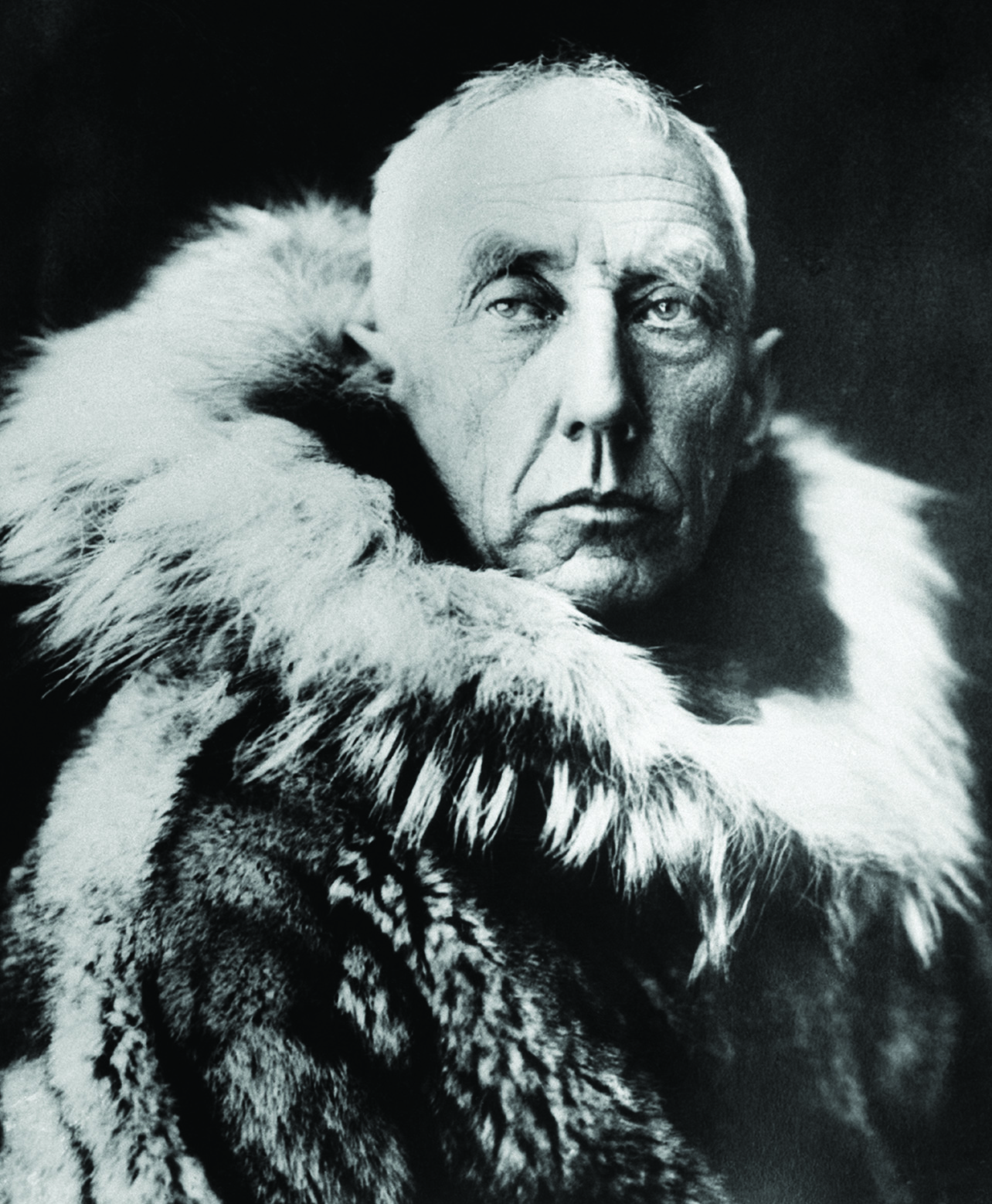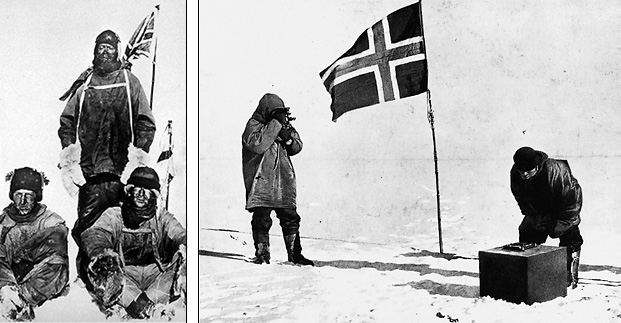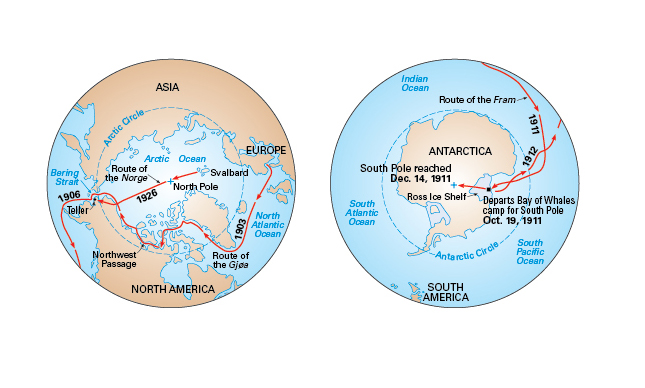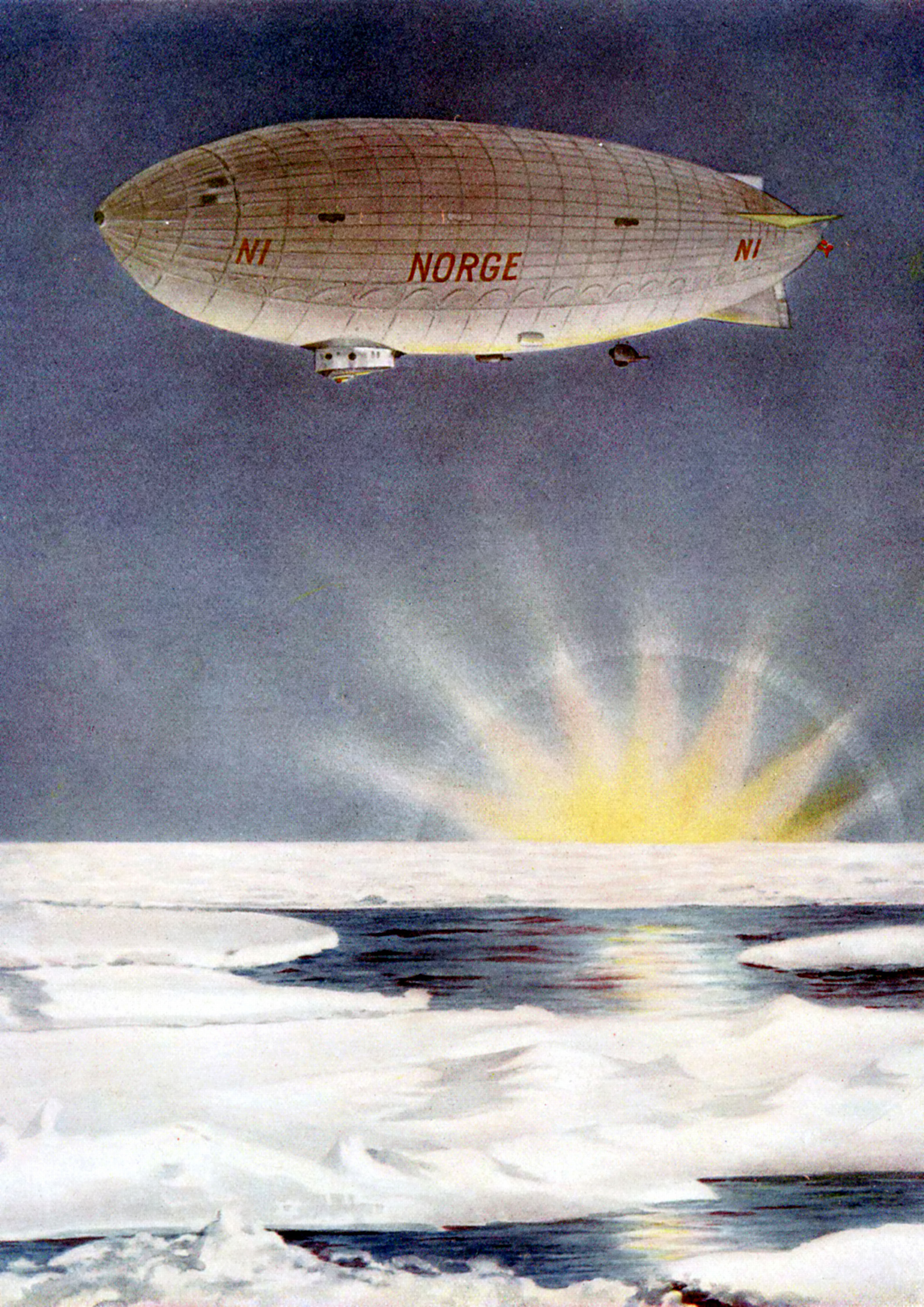Amundsen, Roald, << AH muhn suhn or AH muhnd suhn, ROH ahl >> (1872-1928), a Norwegian explorer, led the first expedition to reach the South Pole. Amundsen and four companions discovered the pole on Dec. 14, 1911. They beat a British expedition led by Robert F. Scott by five weeks. Amundsen is also noted for his many Arctic explorations.
The race to the South Pole.
Amundsen had originally planned on discovering the North Pole. He organized an Arctic expedition and was about to leave when he heard that Commander Robert E. Peary, an American explorer, had just reached the pole (see Peary, Robert E. ). Amundsen changed his plans and decided to lead an expedition to the South Pole instead.

Amundsen left Norway secretly in June 1910 aboard the ship Fram. At about the same time, Scott, unaware of Amundsen’s expedition, also was on his way to the Antarctic. While stopping in Melbourne, Australia, in October 1910, Scott received a message from Amundsen informing him that Amundsen was proceeding to Antarctica. The race to the South Pole was on.

Amundsen and his crew arrived at the eastern edge of the Ross Ice Shelf in January 1911. They spent an Antarctic winter there, making short trips inland to set up stores of food and fuel. On Oct. 19, 1911, after spring had arrived, Amundsen and his men set off for the pole in four sleds pulled by 52 dogs. Near the journey’s end, when they were no longer needed to pull the sleds, the weaker dogs were killed. They were fed to the surviving animals and to the men.
Scott’s expedition, unlike Amundsen’s, met with disaster. Instead of using dogs all the way, Scott relied mainly on ponies to pull the sledges. But the ponies became exhausted and had to be shot. Without ponies, the men had to pull the sledges, carrying the supplies. The men also had to fight severe cold and fierce winds, and they lacked the proper clothes for such conditions. See Scott, Robert F.
Amundsen had a smooth journey by comparison. The route he had chosen was shorter than Scott’s and covered flatter terrain. The dogs withstood the hard work and cold well, and the weather was clear.

On Dec. 14, 1911, Amundsen and his companions calculated that they had reached the South Pole. They began their return journey three days later, leaving behind them a tent and a Norwegian flag. Five weeks later, Scott and his men finally reached the pole, only to discover that Amundsen had been there first. Weary and disappointed, they began their return. But injuries, fatigue, and continued bad weather slowed them down. The entire party soon died of cold and hunger.
Other achievements.
Roald Engelbregt Gravning Amundsen was born on July 16, 1872, in Borge, near Oslo. He studied medicine for two years before going to sea in 1897 aboard the Belgica. During this voyage, Amundsen’s efforts helped to combat scurvy among the crew. In 1898, the Belgica, with Amundsen aboard, became the first ship to winter in Antarctic waters. In 1906, Amundsen completed the first voyage from the Atlantic to the Pacific through the Arctic waters of Canada. During this voyage through the Northwest Passage, Amundsen determined the precise position of the north magnetic pole. From 1918 to 1920, he sailed the Northeast Passage. He traveled from Norway through the Arctic Ocean to the Bering Sea. Amundsen was the first person to sail both the Northwest and Northeast passages.

In 1926, Amundsen made history by flying over the North Pole in an airship called the Norge. The aircraft was piloted by Umberto Nobile, an Italian explorer. In June 1928, Amundsen and his crew vanished in the Arctic while searching for Nobile, who had disappeared in May. Nobile was eventually rescued.
